The Intersection of Data and Behavior Analysis
Applied Behavior Analysis (ABA) is a scientifically grounded approach that relies heavily on data collection and analysis to inform treatment decisions. As a cornerstone of evidence-based practice, ABA integrates systematic data gathering with behavioral theory to tailor interventions, monitor progress, and refine strategies in real time. This article explores the critical role of data-driven decision-making in ABA, emphasizing how visual inspection, technological tools, and empirical evidence foster effective and personalized behavioral interventions, especially for individuals with Autism Spectrum Disorder (ASD).
Fundamentals of Data Collection in ABA
What principles and methods are used to use data effectively in ABA?
In Applied Behavior Analysis (ABA), the effective use of data hinges on systematic, precise, and reliable collection of behavioral and environmental information. Central to this approach is the understanding that data forms the backbone of decision-making, guiding therapists in tailoring interventions to individual needs.
Behavior analysts employ various measurement techniques to capture the targeted behaviors accurately. Common methods include frequency counts, which tally how often a behavior occurs; duration recording, measuring how long a behavior lasts; latency measures, recording the time between a prompt and the behavior; and inter-response time, the interval between successive responses. These continuous measurement methods provide detailed insights into behavior patterns.
Discontinuous sampling techniques, like interval recording and ABC (Antecedent-Behavior-Consequence) data collection, are also frequently used, especially in natural settings where behaviors occur unpredictably. These techniques involve observing and recording behavior during specified intervals, helping to identify environmental triggers and consequences.
To enhance accuracy and streamline analysis, digital tools and platforms such as Alpaca Health automate data entry and generate graphs in real-time. This technology allows for quick visualization of progress and pattern detection, facilitating timely adjustments in treatment.
Training and calibration of data collectors are vital to uphold the integrity of data. Consistent criteria and periodic inter-rater reliability checks ensure that multiple raters interpret and record data uniformly.
Data collection in ABA is guided by principles rooted in behavior analysis theories, emphasizing objectivity and precision. By employing appropriate methods and robust tools, clinicians can monitor progress objectively, identify trends, and make informed decisions.
This dedicated approach to data ensures that interventions are evidence-based, personalized, and adaptable, ultimately improving outcomes for clients. Clear documentation and communication of data findings also help in engaging stakeholders and maintaining treatment fidelity.
Effective data use supports continuous improvement, making it an essential component of quality ABA services.
The Role of Visual Inspection in Data Analysis
What is visual inspection?
Visual inspection involves examining graphs, charts, and other graphical data representations to interpret behavioral data collected during ABA sessions. Practitioners assess patterns, trends, and levels of behavior over time by visually analyzing data points plotted on a graph. This method allows them to determine whether meaningful changes have occurred and if the behaviors are responding as expected to interventions.
Its role in ABA research and practice
In ABA, visual inspection is a primary tool for evaluating the impact of interventions. It helps behavior analysts identify whether the data show functional relations—causal links between their treatments and observed behavior changes. By examining the stability, variability, and trendlines in the data, clinicians can decide when to modify or continue interventions.
Data collection often includes various measures such as frequency, duration, intensity, and latency of behaviors. When this data is plotted, visual inspection aids in tracking progress and making real-time decisions. This process supports a client-centered, data-driven approach, ensuring treatments are adapted based on individual responses.
Challenges and solutions related to visual analysis
One challenge in visual inspection is its reliance on subjective judgment, which can vary among raters. Studies show that agreement among practitioners tends to be poor when data are highly variable or presented in formats that are difficult to interpret. However, recent research indicates that agreement levels improve under experimental conditions, especially when data are presented point-by-point, simulating real-time decision-making.
Factors influencing agreement include data variability, the experience level of observers, and the context of the data presentation. Proper training on graph interpretation, understanding of variability, and familiarity with data presentation methods can enhance reliability.
Additionally, technological advances support more objective analysis. Platforms like Alpaca Health automate data entry and graph generation, reducing human error and making data interpretation more consistent. Using visual tools like graphs and charts has been shown to improve understanding of behavioral trends, especially when combined with ongoing training and standardized procedures.
Influence of data analysis on intervention decisions in ABA
Data analysis is fundamental for making informed, ethical, and effective decisions in ABA. It enables clinicians to monitor individual progress accurately, identify when behaviors are improving or plateauing, and determine if behaviors are responding appropriately. Based on data, practitioners can decide whether to adjust intervention strategies, increase or decrease treatment dosage, or phase out interventions.
In summary, visual inspection remains an essential component of ABA data analysis, guiding personalized treatment decisions. While challenges exist, proper training, technological support, and an understanding of influencing factors can enhance its reliability, ultimately improving therapy outcomes.
Understanding Variability and Its Impact on Data Interpretation
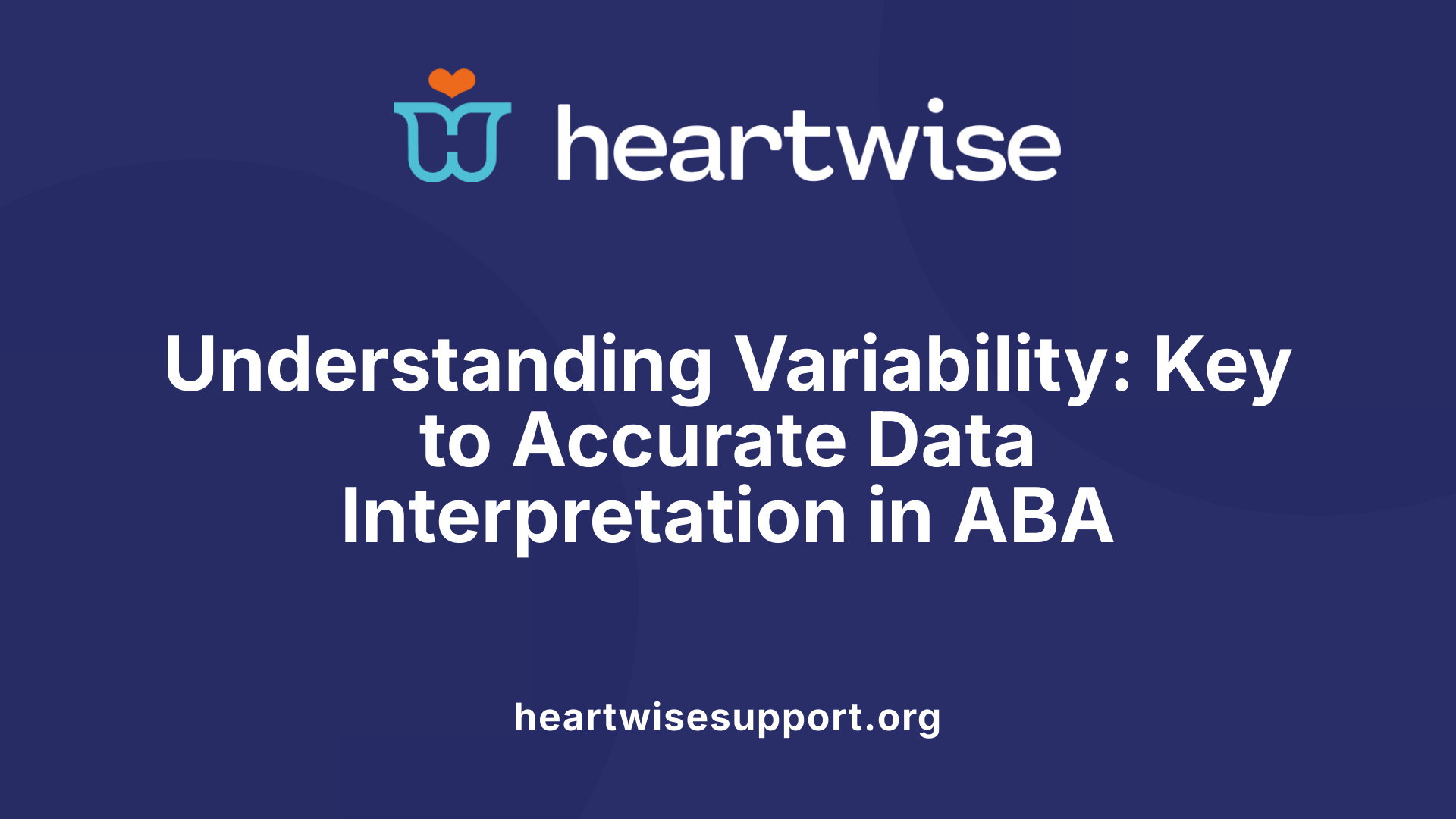
Factors influencing data variability
In applied behavior analysis (ABA), several factors can affect the variability of data collected during interventions. These include the inherent inconsistency of behaviors, environmental changes, and the accuracy of measurement procedures. Variations in client behavior, such as fluctuations in motivation or emotional state, can introduce inconsistency. Additionally, the context or setting in which data is collected, like different times of day or environments, plays a role in variability. The level of training that clinicians or data collectors have also impacts the reliability of data; well-trained analysts tend to produce more consistent measurements.
Effects of variability on interpretation
Data variability can significantly influence how behavior analysts interpret results. When variability is low, experts and Board Certified Behavior Analysts (BCBAs) tend to agree more on whether an intervention is producing meaningful change. Conversely, high variability makes data harder to interpret, often leading to disagreements or uncertainty about the interventions' success.
For example, in studies where data are presented point-by-point—reflecting real-time decision-making—analysts can more accurately assess patterns and trends. When data display high fluctuation, it becomes challenging to determine if behaviors are truly changing or if observed differences are due to inconsistent measurement or external factors.
Strategies to manage variability
To improve decision-making, it is essential to manage and minimize data variability where possible. Proper training of data collectors ensures consistency and accuracy. Using standardized measurement procedures, such as precise operational definitions and consistent data collection schedules, reduces measurement errors.
Presenting data in a clear, point-by-point format can mirror real-time clinical decisions, allowing for more immediate adjustments. Employing visual tools like graphs helps in identifying patterns despite underlying fluctuations. When high variability persists, analysts may also consider extending baseline phases or collecting more data points to establish more stable trends.
Additional contextual information, like severity of behaviors or treatment expectations, also guides interpretation. Recognizing these influences helps therapists plan appropriate intervention adjustments and decide on suitable lengths for baseline phases.
How does data analysis influence intervention decisions in ABA?
Data analysis plays a crucial role in shaping intervention decisions in ABA by enabling clinicians to monitor progress, identify behavioral patterns, and evaluate the effectiveness of treatments. Visual inspection of data, combined with measures of variability and contextual information, guides decisions such as when to terminate or modify baseline phases and when to implement or adjust interventions. The systematic collection and analysis of data provide empirical evidence of behavior changes, helping establish functional relations and ensuring interventions are responsive to individual needs. Considering additional clinical factors, along with data variability, enhances decision-making accuracy and personalization. Ultimately, ongoing data analysis ensures that interventions remain effective, ethical, and tailored to promote positive behavioral outcomes.
Integrating Technology in Data Management
Digital tools and platforms have revolutionized data collection and analysis in applied behavior analysis (ABA). Modern technology enables therapists to enter data directly into software systems during or immediately after sessions, which reduces errors and ensures high data accuracy. Platforms like Alpaca Health automate data entry, generate graphical displays of behavioral trends, and deliver instant insights, making the process more efficient.
Automation plays a crucial role in streamlining ABA procedures. Automated data collection captures frequency, duration, intensity, and latency of behaviors using digital recording devices or apps. This real-time data availability supports ongoing monitoring and swift decision-making. Technologies that incorporate artificial intelligence or machine learning further enhance pattern detection, identify subtle shifts in behavior, and predict outcomes based on accumulated data.
The benefits of integrating technology in ABA are numerous. It promotes consistency and stability through precise measurement, allows for dynamic adjustments to interventions, and facilitates communication among team members and caregivers. Additionally, digital tools help overcome some limitations of visual inspection—the traditional method—by providing objective, quantifiable evidence that supports data-driven decisions.
Using technology also enhances the personalization of therapy. Data collected can be analyzed to tailor treatment intensities, session content, and reinforcement strategies to the individual's specific needs. This individualized approach maximizes treatment effectiveness, as evidenced by studies showing that adaptive, data-informed plans lead to better improvements in adaptive functioning for children with ASD.
Overall, the adoption of technological solutions in ABA underscores a shift toward more precise, efficient, and personalized care. Combined with proper training and understanding of data interpretation principles, technological integration solidifies ABA as an evidence-based approach focused on measurable, positive outcomes.
Case Studies Illustrating Data-Driven ABA Interventions
How does data analysis influence intervention decisions in ABA?
Data analysis is a central element in applied behavior analysis (ABA), guiding clinicians in making informed intervention choices. Through systematic collection and examination of data, behavior analysts can track progress, identify behavioral patterns, and determine whether behaviors are changing in response to treatment.
Visual inspection of data charts, complemented with assessments of variability, helps clarify whether observed changes are meaningful and directly related to the intervention. For example, a rising trend in a target behavior after implementing a new strategy indicates its potential effectiveness.
Decisions such as when to shift from baseline to intervention phases or when to modify an existing intervention are grounded in data trends. If data show stable and low variability, clinicians might proceed confidently with interventions. Conversely, high variability may prompt further analysis or additional measures before proceeding.
Incorporating contextual factors—such as severity of behaviors, environmental influences, and client-specific considerations—with data insights enhances decision accuracy. This integrated approach ensures that interventions are tailored, effective, and ethically responsible.
Continuous data monitoring allows for timely adjustments, ensuring that therapy remains aligned with the individual's evolving needs. For instance, if data reveal stagnation or regression, modifications like changing reinforcement schedules or session structure can be strategically applied.
Overall, the use of rigorous data analysis in ABA fosters a scientific, transparent process. It supports establishing functional relations between interventions and behavior changes, ultimately leading to more effective, personalized treatment plans and improved outcomes for individuals with ASD.
Examples of successful data use
In practical applications, data-driven strategies have shown remarkable success. For example, clinicians tracking frequency and duration of maladaptive behaviors identified specific triggers and refined intervention protocols to mitigate these behaviors.
Adjustments based on data insights
In several case examples, therapists used real-time data to modify reinforcement schedules or session intensity. These adjustments resulted in more rapid progress and higher session engagement.
Outcome improvements
Consistent monitoring and targeted modifications have led to measurable improvements. Using tools like Vineland 3 assessments, clinicians quantify gains in adaptive functioning, enabling a personalized approach that maximizes each child's strengths.
In summary, thorough data analysis underpins effective decision-making in ABA. It allows practitioners to adapt interventions responsively, supporting better behavioral outcomes and fostering a more client-centered approach.
Measuring Progress and Outcomes with Reliable Tools
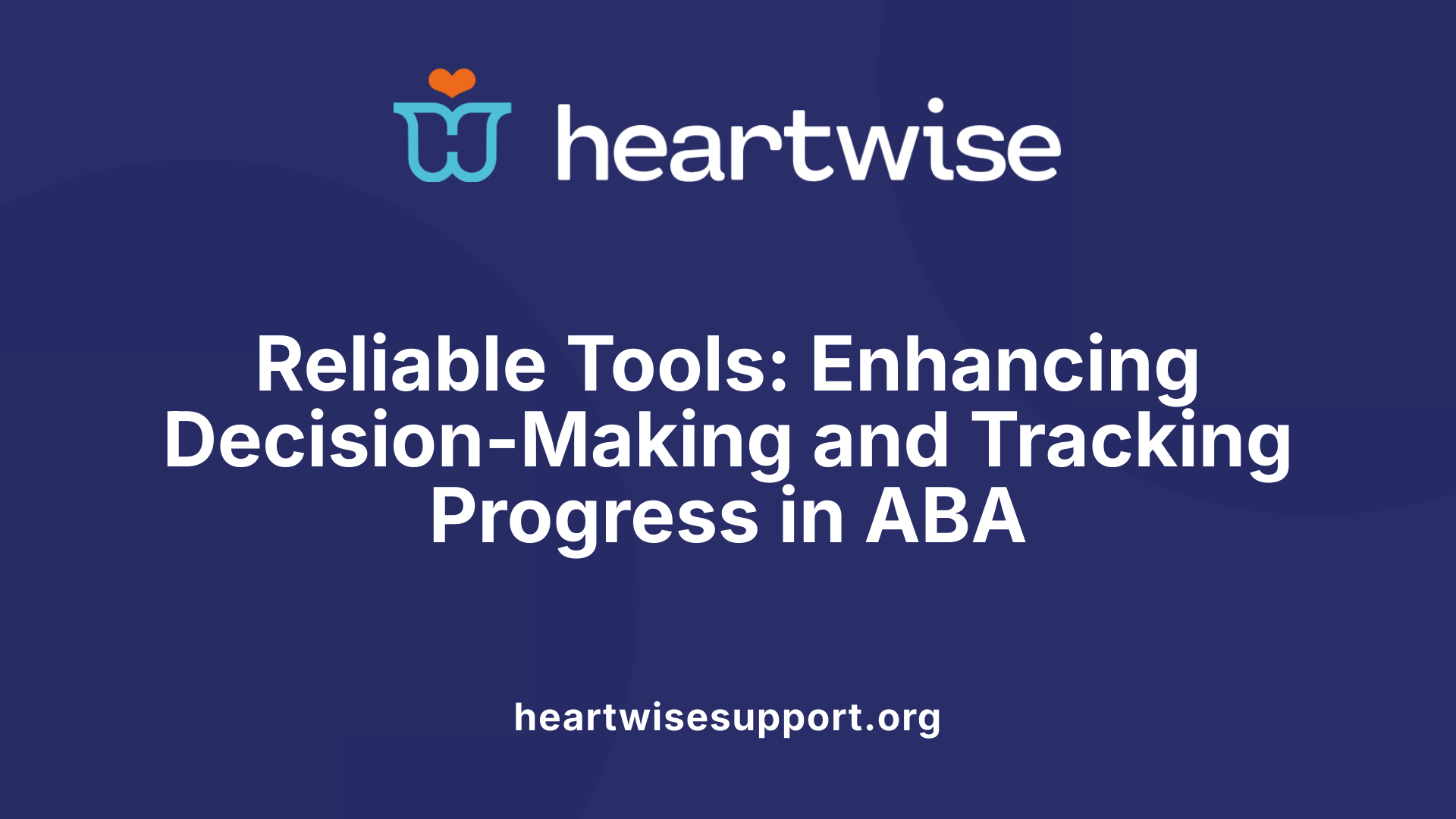
How does data enhance decision-making and treatment outcomes in ABA?
In Applied Behavior Analysis (ABA), collecting and analyzing data plays a pivotal role in shaping effective treatment plans. Systematic data collection—covering aspects such as frequency, duration, intensity, and latency of behaviors—provides objective insights into a client’s progress and the impact of interventions. This information allows behavior analysts to identify behavioral patterns and assess whether targeted behaviors are improving.
Using visual tools like graphs and charts, therapists can quickly interpret trends, compare baseline data with ongoing results, and determine if modifications are necessary. This real-time analysis supports timely decision-making, ensuring that interventions remain tailored to the individual’s current needs.
Furthermore, data fosters a collaborative environment by sharing progress reports with clients and their families. Transparent progress tracking helps build trust, encourages engagement, and empowers caregivers to participate actively in treatment decisions.
Ultimately, harnessing reliable data leads to precise, personalized interventions that are more likely to produce sustained behavior change. It also facilitates the demonstration of intervention efficacy, fostering continual improvement and long-term success in ASD treatment.
Implementing Personalized, Data-Driven Interventions
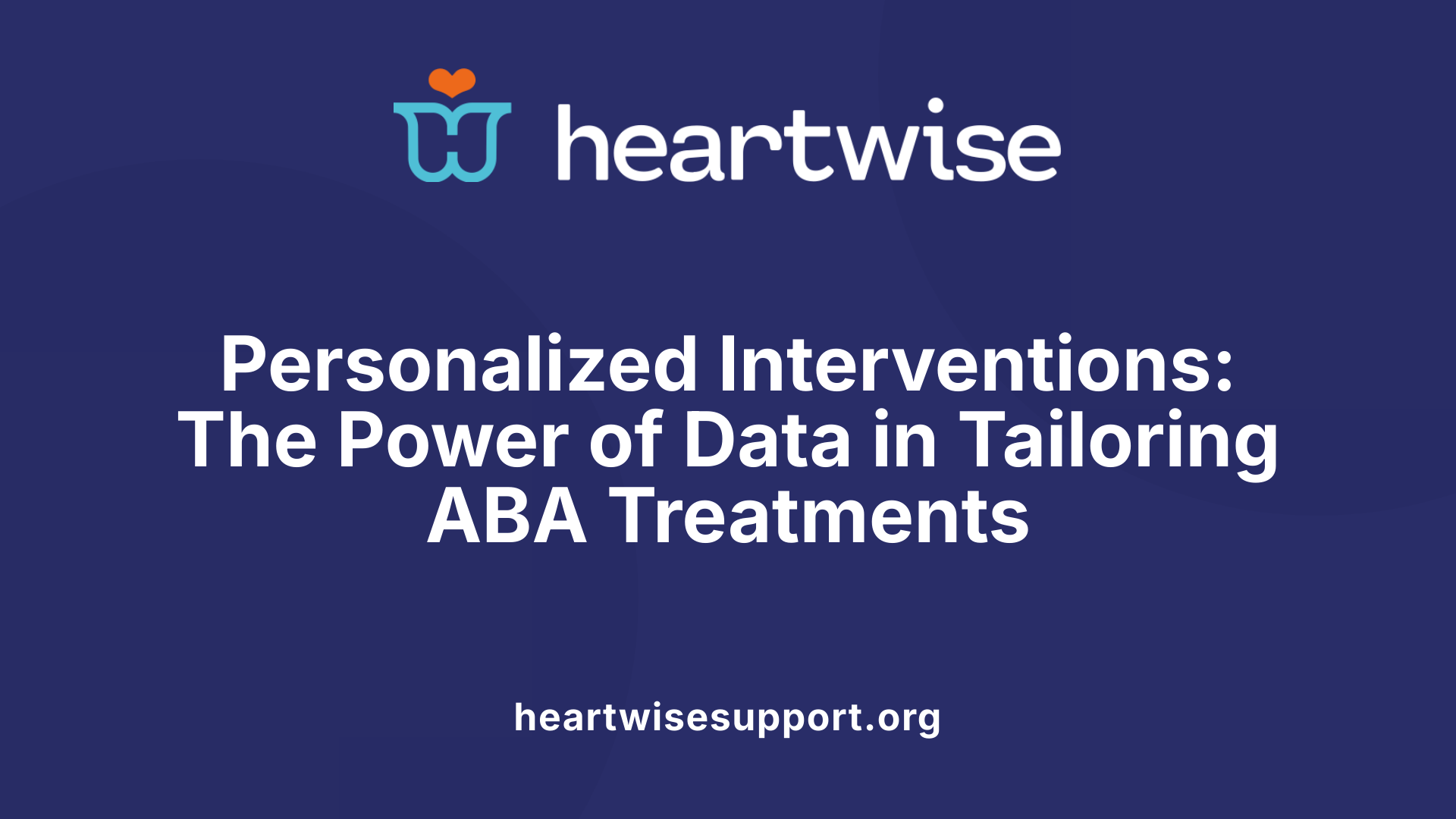
Why is data-driven practice important in ABA therapy?
Data-driven practice forms the foundation of effective ABA therapy by providing objective, measurable insights into a client’s behavior and progress. It enables therapists to tailor interventions specifically to the individual’s needs, moving beyond guesswork or generalized approaches.
Through systematic data collection—such as frequency, duration, and latency of behaviors—therapists can accurately track how a client responds to different strategies. This ongoing monitoring helps in identifying behavioral patterns and assessing whether interventions are producing desired changes.
Recent studies underscore the significance of personalizing treatment dosage based on data rather than merely hours of therapy received. Results show that improvements in adaptive functioning can occur independently of total therapy hours when interventions are tailored to the individual's unique profile.
Furthermore, integrating data analysis fosters better communication with families and allows for transparent discussions about progress and adjustments. It encourages continuous professional growth for therapists and ensures that practices remain ethical, effective, and responsive.
By systematically applying data-driven decisions, ABA practitioners can optimize effectiveness, ethically justify their approaches, and support long-term positive outcomes for individuals with ASD. This approach also supports a client-centric model, where therapy adapts as the person’s needs evolve.
Personalizing ABA sessions based on data
Creating individualized treatment plans involves collecting extensive data during therapy sessions. These records help identify what techniques work best for each person, enabling precise adjustments.
The process includes setting clear, measurable goals linked to specific behaviors. Regular assessments use tools like frequency counts, interval recordings, or baseline measures to evaluate progress.
Graphical representations, such as charts and graphs, are valuable for visualizing trends. These tools help therapists, clients, and families understand progress, setbacks, or plateaus, making it easier to implement timely interventions.
Decisions about therapy content and focus areas are driven by this ongoing data analysis, ensuring the intervention remains relevant and effective.
Adjusting intensity and content
Based on collected data, therapy intensity—including session frequency and duration—can be fine-tuned to maximize benefit.
For example, if data shows consistent improvement, the therapist might consider increasing or decreasing session frequency to optimize learning.
Similarly, the content and emphasis of sessions can shift. If certain strategies or reinforcement schedules yield better results, they can be prioritized in future sessions.
This personalized tailoring is supported by technology platforms like Alpaca Health, which automate data entry and generate real-time insights. These tools streamline decision-making and enhance the accuracy of adjustments.
Monitoring and responding to progress
Ongoing progress monitoring is vital for ensuring interventions stay effective as a child’s needs evolve.
Regular data collection helps identify when a client has plateaued or regressed, prompting timely modifications.
Adjustments might include changing reinforcement methods, introducing new strategies, or modifying the environment to better support behavior change.
This continuous feedback loop ensures interventions remain aligned with individual goals, fostering steady progress.
In sum, data-driven, personalized ABA interventions maximize therapy effectiveness. They foster a dynamic, responsive process that adapts to each child's growth and changing needs, leading to meaningful, measurable improvements in adaptive functioning.
The Ethical and Professional Aspects of Data Use in ABA
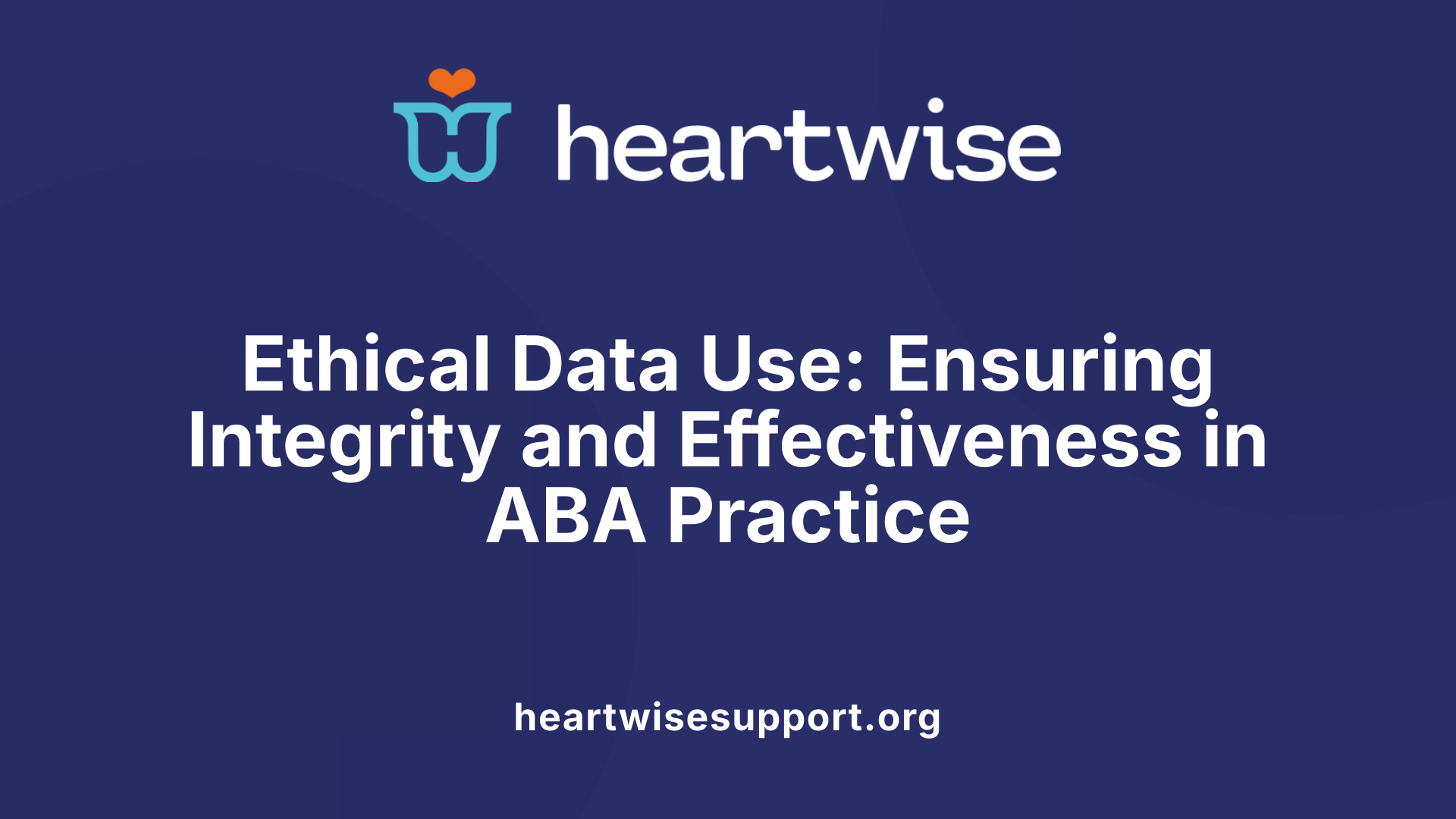
Why is data-driven practice important in ABA therapy?
Data-driven practice forms the backbone of applied behavior analysis (ABA) by providing objective evidence to guide intervention strategies. This approach helps therapists tailor treatments to each child's specific needs, avoiding a one-size-fits-all model. Accurate data collection on behaviors—such as frequency, duration, or latency—allows for monitoring progress and making informed decisions.
Recent research underscores that adjusting therapy dosage based on systematic data can improve outcomes regardless of the total hours involved. This emphasizes the importance of personalized treatment, with data serving as a compass for adjustments that optimize effectiveness.
Moreover, using data enhances communication between clinicians, clients, and families by clearly illustrating progress or areas needing attention. It also fosters professional growth among therapists by providing measurable benchmarks and encouraging ongoing learning.
Through rigorous data collection and analysis, ABA practitioners can justify intervention choices, demonstrate progress, and uphold ethical standards. Ultimately, a strong data-driven foundation ensures therapies are not only effective but also ethically responsible, leading to better long-term results for individuals with ASD.
Future Directions in Data-Driven ABA Practice
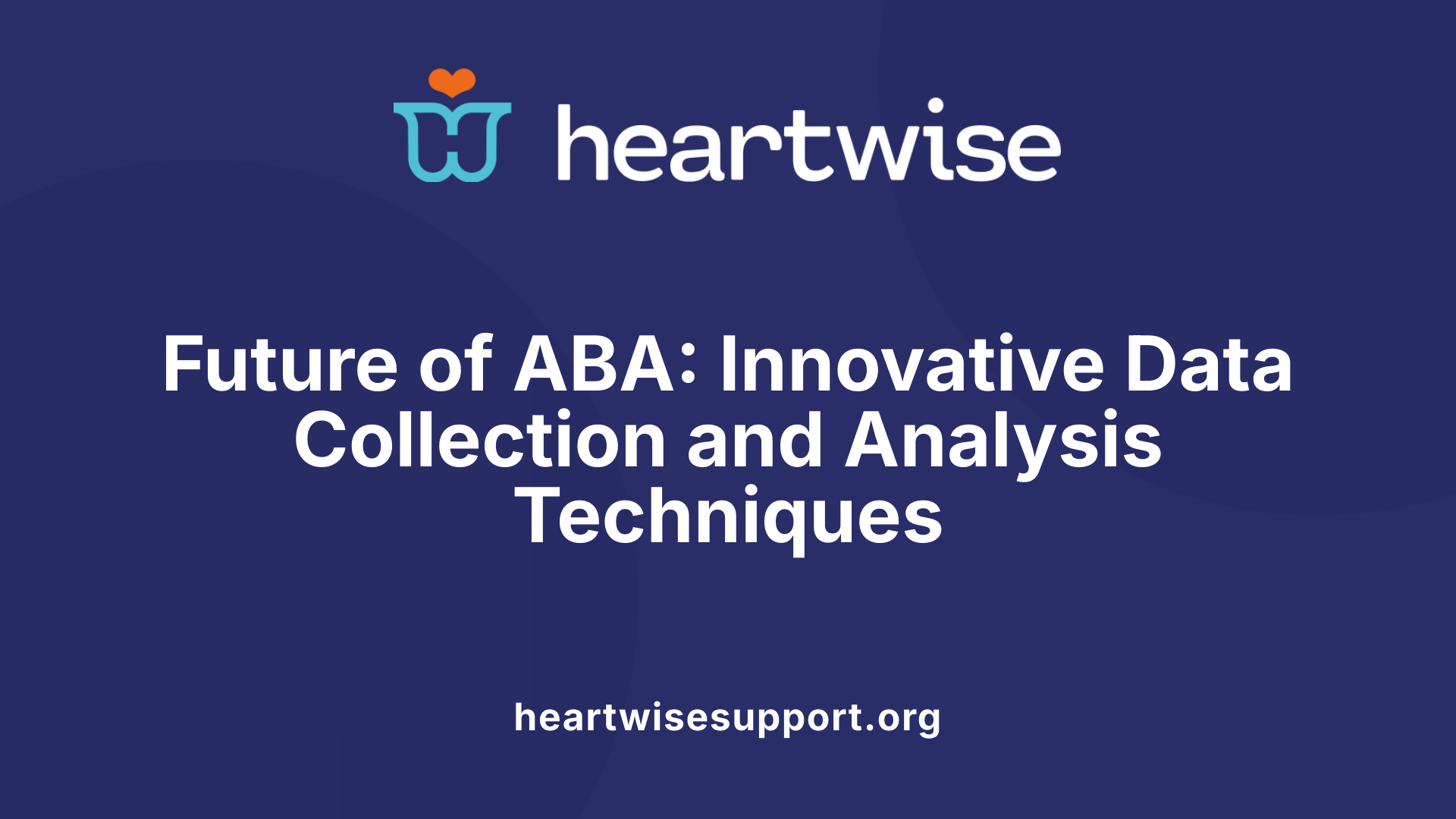
What principles and methods are used to use data effectively in ABA?
Effective utilization of data in Applied Behavior Analysis (ABA) hinges on systematic, precise, and reliable collection of behavioral and environmental information. Behavior analysts follow established principles rooted in behavior analysis theory, ensuring that data accurately reflect real-world behaviors.
A combination of measurement techniques is employed to capture the nuances of behavior. Continuous methods such as frequency counts, duration, latency, and inter-response time recordings provide detailed insights. Discontinuous sampling techniques, including interval recording and ABC data collection, are valuable for monitoring specific behaviors within structured time frames.
Modern digital tools and software applications facilitate real-time data entry, which enhances accuracy and consistency. These platforms automate graph generation and data analysis, making it easier for clinicians to identify trends and patterns promptly.
Training and calibration are essential to maintain data quality. Behavior analysts undergo rigorous training to ensure consistent measurement, reducing errors and enhancing inter-rater reliability.
Data analysis is tailored to the type of information gathered. For example, graphing behavioral data helps visualize progress, while statistical analyses can confirm the significance of observed changes. This process supports objective progress monitoring, guiding clinicians in making informed, data-driven decisions.
Utilizing data effectively leads to personalized, evidence-based interventions. It allows for timely adjustments, improves communication with stakeholders, and ultimately enhances treatment outcomes. As technology advances, integrating innovative data collection and analysis tools is poised to transform ABA practice further, fostering more precise and effective support for individuals with ASD and other behavioral challenges.
Leveraging Data for Better Behavioral Outcomes
In conclusion, the integration of robust data collection, sophisticated analysis, and technological tools transforms ABA from a purely behavioral framework into a highly personalized, effective intervention modality. Visual inspection, understanding variability, and continuous monitoring empower clinicians to make informed, timely decisions that enhance treatment efficacy. As innovations emerge and research advances, the future of ABA promises even more precise and tailored approaches, ultimately leading to improved quality of life for individuals with ASD. The commitment to evidence-based, data-driven practice remains fundamental to advancing the science and application of ABA.
References
- THE IMPACT OF DATA VARIABILITY, TRAINING, AND CONTEXT
- Data-driven, client-centric applied behavior analysis treatment-dose ...
- Data Analysis in ABA: A Guide to the Analytic Dimension
- The Role of Data-Based Decision-Making in ABA
- Ongoing Assessment in ABA Therapy: A Data-Driven Approach
- Types of ABA Data Collection Methods - Raven Health
- Understanding the Role of Data in ABA Therapy: How Progress is ...
- 4 Steps for an Effective ABA Data Collection Research - ExpiWell











